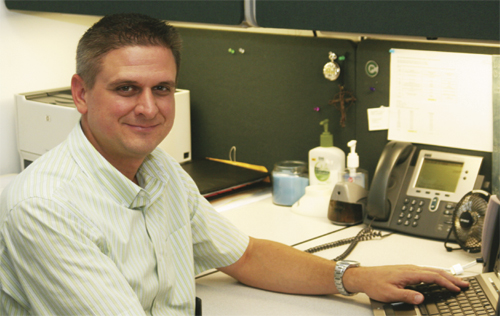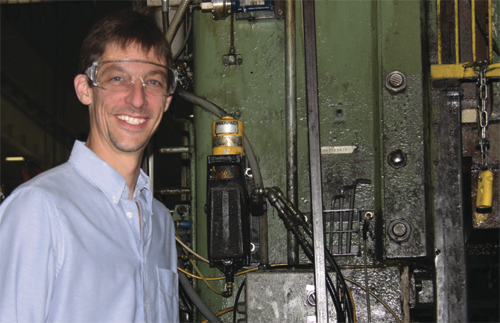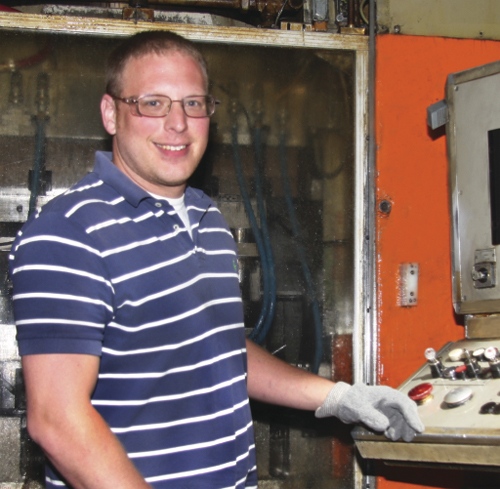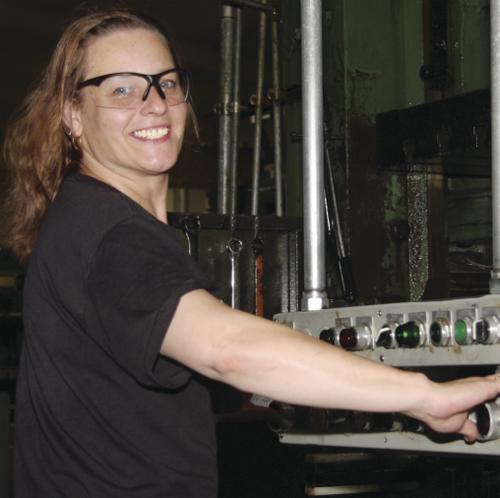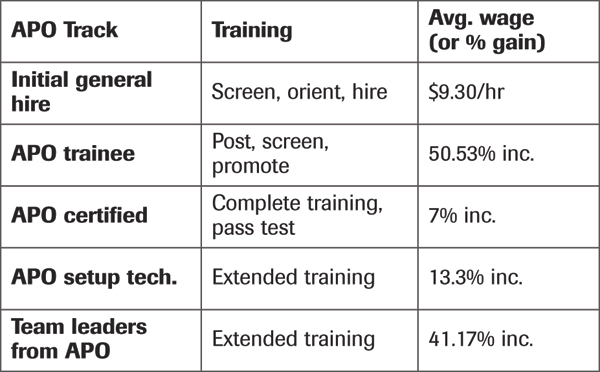Recognizing Loyalty as a Two- Street
How does all of this workforce development parlay into the company’s success? “People see the to the top, and they get there, using what tools we provide them,” Clay says. “This, in turn, creates loyalty to the company. Our employees appreciate the opportunities we provide, and in turn they bring their creativity to work every day, in addition to their physical labor.”
Clay’s views mirror those of experts that closely follow the U.S. manufacturing industry, where the shortage of skilled workers has been well publicized. U.S. manufacturers need frontline workers who can solve problems on their own, and also can make sound business decisions. Says Emily Stover DeRocco, president of The Manufacturing Institute, in an interview with the University of Phoenix:
“Manufacturers must stay committed to research and development, and engage a talent pool with the right skills to drive innovation and invention within our manufacturing economy.”
Pridgeon & Clay is flush with independent thinkers—workers that have learned in structured classes as well as from each other on the plant floor. “Everybody here is a teacher and a leader,” says director of operations Dan Swiger. Of the 650 employees in Grand Rapids, 75 percent are production workers—machine operators, die setters, etc., and 75 percent have taken advantage of inhouse training programs such as automatic press operator (APO) and on-the-job training programs. Thirty-two employees have taken the APO training, while 480 employees have been through on-the-job training since 2009. Another several employees have taken advantage of the firm’s reimbursement program to, on their own time, gain outside skills training. Its latest success: training 12 employees in leadership development. Says Swiger:
|
|
“As we’re growing, we’ve become focused on creating the next set of team leaders, business-unit managers, etc. We’re excited at the enthusiasm and commitment the participants have shown.”
Finding and Nurturing Leadership Potential
Swiger is a stunning example of how the company recognizes leadership potential in its frontline workers and helps them realize that potential. He began his career at Pridgeon & Clay in mid-1992 as a utility apprentice in the company’s toolroom. Following his apprenticeship, which included four years of part-time college classes, in 1998 Swiger became lead person in the toolroom. In 2003 he climbed to business unit manager. He attained a bachelor’s degree in 2009 and was named director of operations in 2010.
“All along the ,” he says, “I have had very open relations with my supervisor, which I credit with transitioning into a manager myself. And I’m still learning.”
Swiger says his primary responsibility as director of operations is to find and train his successor. He manages three business unit managers, as well as a logistics manager in the company’s warehouse and the plant manager of a sister plant in Indiana. “My role is to make them better,” he says, “and to be a teacher. If I have to make all of the important decisions for our plant, then we will fail.
“We want our employees to be able to work individually, to make decisions on their own,” Swiger continues. “At the same time, we also train them to work in teams so that they can initiate continuous-improvement ideas and then work together to turn those ideas into reality on the plant floor.”
To supplement inhouse classroom training initiatives and a structured on-the-job training program—both of which have earned the company awards from its industry trade association, the Precision Metalforming Association—the company is a dues-paying member of the Source, a local not-for-profit employee-support organization. Classes offered by The Source include computer basics, English as a second language, financial literacy, financial management, introduction to home ownership and home maintenance. In the last 3 yr., 45 Pridgeon & Clay employees have attended courses at The Source.
A Place Where All Opinions Matter
What motivates people to better themselves at Pridgeon & Clay (other than the opportunity to earn promotions and pay increases)? Swiger has a quick answer to the question: “Everyone here knows that their opinions matter, and are valued,” he says. “From the owners to the vice presidents and on down, everyone cares about each other and values their abilities far beyond the ability to physically do their jobs. We’re part of something more than just collecting a paycheck and making automotive parts. Our job satisfaction, and the urge to continue to grow and develop as employees, comes from being part of a company that cares about us as individuals, and creates windows of opportunity for us to climb through.”
Of course, as frontline workers climb through those windows of opportunity, promotions and wage increases come along. According to corporate director of human resources Julie Church Krafft, 90 of the firm’s employees have received promotions within the last 3 yr., enjoying an average wage increase of 17 to 25 percent.
Ahead of the Workforce-Engagement Curve
A highly engaged force of workers flush with more than just the basic reading, writing and communication skills puts Pridgeon & Clay well ahead of the typical manufacturer, according to statistics from the National Association of Manufacturers. A recent NAM Skills Gap Report finds that 36 percent of manufacturers indicate that their workers have insufficient reading, writing and communication skills, and only 29 percent perceive their workforce to be “highly engaged.”In Grand Rapids, area staffing agencies note a rise in the need for skilled labor among manufacturers, according to a recent article in The Grand Rapids Press that quotes Church Krafft. Michigan’s manufacturing sector is expected to add 64,600 jobs in 2011 and another 61,500 in 2012, says the article. It goes on to quote a Grand Rapids-based skilled-labor recruiting specialist Brian Paavola, president of Workbox Staffing, who notes that “the demand is such that employers must act quickly on hires or risk having someone else grab their applicant.” All the more reason to focus on incumbent training and retention initiatives. Church Krafft’s input to the article:
“We’re experiencing an increasing need for technical talent, from engineers to enhance our production processes, to hands-on technicians for our automatic presses and weld cells. Those with solid math and computer skills, mechanical aptitude, a great work ethic, a positive outlook on wellness and an interest in higher education are the types of employees we’re looking to add to our team.”
Several Pridgeon & Clay employees boast exactly the traits cited by Church Krafft. For example, consider setup technician Bryan VanTimmeren, hired at Pridgeon & Clay in December 2009 as an automatic press operator (APO) trainee, promoted to APO just 3 months later, to setup technician in April 2011 and to an engineering position in September 2011. In fact, of the firm’s 33 setup technicians, 28 were promoted from within via the job-posting process.
Since his hiring, VanTimmeren has completed an associate’s degree in engineering from Ferris State University, paid for by Pridgeon & Clay.
“Now I’ve got my eyes focused on further opportunities to move up at the company,” he says. “Within 5 years I’d like to be a project manager. This is a solid company that has been there for me, allowed me to learn a lot and progress quickly. The path is there, it’s available to anyone that wants to take it.”
The Employee Open Job Process
|
|
As technical trainer, Scott Visser’s goal is to train the company’s frontline workers before they’re needed, proactively rather than reactively, so that they’re prepared when jobs become open. “I’m looking forward to helping Pridgeon & Clay build its workforce for the future,” he says.
|
Pridgeon & Clay’s open job process requires that notifications be sent to all employees any time an open position becomes available (that hasn’t been posted within the previous 6 months). Notifications are via e-mail, fliers posted on bulletin boards and electronic posting via the company’s intranet site, accessible to all employees via computers placed in public areas throughout the plant. Open job postings stay active for internal employees for three business days.
All employees are eligible to apply unless they fail to meet minimum requirements for the posted position; the employee has a current attendance warning on his work record; the employee has more than two current company-rule violations on his record; or the employee is already currently on an open job. Following interviews with candidates, once the position is filled the human resources department notifies all applicants of the decision, and also provides feedback to each applicant to help them prepare for the next opportunity.
“We have created a career path that begins with an entry-level position,” says Church Krafft, “such as a packer, and through the job-posting process packers can become machine operators. Then, through our APO training program, machine operators can become APO trainees and APOs. The next step is to become a technician. All of this advancement comes via inhouse classroom and on-the-job training. Via our educational reimbursement program, employees then can progress to become die technicians, team leaders and, ultimately, business unit managers.”
VanTimmeren’s path at Pridgeon & Clay began when he dove into the firm’s award-winning APO Certification Program, a standardized training program available to all existing and new automatic press operators at the company. The goal of creating the program was to develop a to formally train press operators, since the technology on the company’s presses had increased and its business had grown (in 2008) and was unable to keep up with hiring qualified APOs from outside, and part of its business strategy included standardizing the process used to run its presses and train its employees. It established a team of subject-matter experts and developed 21 courses, each course requiring trainees (and existing operators) to attend one class per week (1.5 to 3 hr. each). The course outline includes classes in setup and operation of straighteners and feeders, press safety, maintenance, quick die change and sensor technology.
Each course includes a classroom test and an on-the-floor audit to demonstrate application of the classroom instruction. All APOs spend 33 hr. in the classroom and 50-plus hr. on the floor in one-on-one training with the firm’s technical trainer. To date, about half of the firm’s 100-plus APOs have completed the course.
The APO training has proved to be a breeding ground for leadership on the plant floor. In addition to its business unit managers, Pridgeon & Clay has spread the responsibilities for maintaining its production facility to its 21 team leaders out on the shop floor. Of the 21, 15 were promoted from within.
Adds Church Krafft: “The average pay increases for promotions via our job-posting process tell an exciting story. Average wages for an initial hire are $9.30/hr. APO trainees earn an average wage increase of 50.5 percent, with another 7 percent raise coming following APO certification. Setup technicians earn another 13.3 percent increase on average, and team leaders boost their wages by another 41 percent.”A Deep Pool of Deep Thinkers
Building leadership from within provides Pridgeon & Clay with a deep pool of deep thinkers who, says company president Bob Clay, look to learn and create opportunities for the company to grow. “I encourage the creativity; the rest is up to them,” he says, and proceeds to describe some of the profitable decisions that have been made to help fuel the company’s growth.
“Those stories are being written right now,” Clay says. “We’ve als been adventurous about investing in new technologies. For example, we were one of the first companies to run coil into big transfer presses, and one of the first to fineblank certain types of automotive exhaust components. The decisions to develop those types of technology advancements come from our creative, curious and driven employees.” MF
Case Study: McGregor Metalworking, Springfield, OH
Case Study: E.J. Ajax and Sons, Fridley, MN
View Glossary of Metalforming Terms
See also: Pridgeon & Clay, Inc.
Technologies: Management, Quality Control, Training







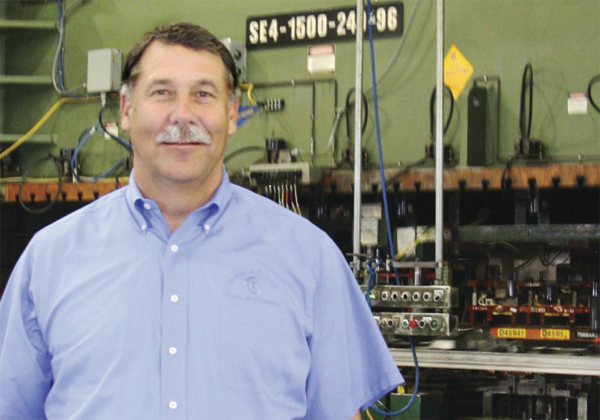
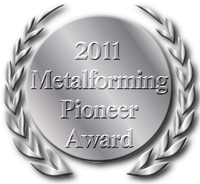 Pridgeon & Clay is one of the largest independent, value-added manufacturers and suppliers of stamped and fineblanked components in the United States. The firm boasts a global workforce of more than 1000 skilled employees, which its managers quickly credit with providing its full-service approach to design, prototyping, product validation and manufacturing.
Pridgeon & Clay is one of the largest independent, value-added manufacturers and suppliers of stamped and fineblanked components in the United States. The firm boasts a global workforce of more than 1000 skilled employees, which its managers quickly credit with providing its full-service approach to design, prototyping, product validation and manufacturing. 